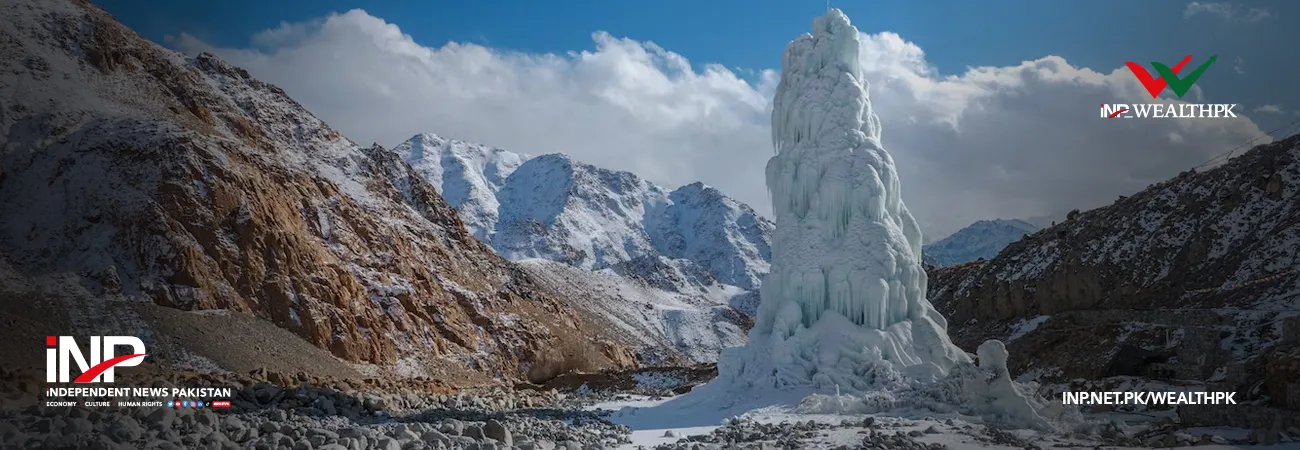INP-WealthPk
Faiza Tehseen
The government has been asked to promote ice towering, or artificially-formed ice mass, in the Gilgit-Baltistan region of Pakistan to help overcome the adverse effects of climate change and to get sufficient water for farming and human needs.

“It is a cost-effective, nature-friendly and handy way to conserve water in the mountainous areas with normal temperatures staying below zero degrees at the Celsius scale,” stressed Dr Zakir Hussain Zakir, director of planning and development, and project leader for ice towering at the University of Baltistan, Skardu (UOBS). Talking to WealthPK, he said artificially formed ice masses were named as ice towers or ice mounds. “With natural sunshine, an ice tower gradually melts and produces water. It starts melting in March till end of May, serving irrigation needs during the spring and early summer. In a majority of areas located at high altitudes, water is insufficient to irrigate crops because glaciers do not melt before summer and water springs do not flow in all areas. So, the need for growing ice towers is increasing.” Zakir said November was the ideal time to create an ice tower. “Natural shallow gorges or safe surfaces can be picked to retain water. There is no need for any special infrastructure or technique to create an ice tower. Only the site selection, location and pipe installation techniques are used in the process.” Further explaining the process, he said water is sprayed on the frost to create solid ice masses. “For this purpose, the spring water is accumulated at a place at least 40 to 50 meters higher than the ice tower formation.
It creates a gravity pressure and from here it is sprayed through pipes at a specific place where it can reside and can be caught by the surrounding herbs, bushes, trees and boulders.” He said the size of an ice tower depended upon its water intake (the consistency of water showering), and climatic conditions. “It may gain a length and width of 100 feet or more within a month. It all depends on the continuity of the water spray/shower on it.” He said ice towering was ideal in winter months starting from mid-November till mid-March as water was not required for irrigation during these months and most of it either emptied into rivers or percolated in debris. Answering a question regarding the ideal location to place an ice tower, the UOBS professor said that mostly an open area was chosen for the purpose. “However, sometimes it depends upon the choice of people and their needs.” He said sufficient sun span was required for gradual melting of an ice tower. Besides making ice towers, the showering technique was also applied to the existing springs, large water depressions and huge natural water courses in Gilgit-Baltistan, he added.
Discussing the cost of shaping an ice tower, he said without the community involvement, it might cost from Rs1.5 million to Rs2 million, but with the community’s participation, the cost was negligent. He said one setup could be retained for more than 10 years depending on the quality of pipes. The UOBS director of planning and development said in Ladakh, ice towering was a common practice with a far different technique. “The people call the ice tower an ice stupa (a Buddhist religious place shaped like a pyramid). First, they erect a pipe and shower water on it so smartly that it adopts a beautiful pyramid-type shape. They consider it a holy practice in the religious context. If water pressure does not keep the balance at any place, they throw water at it separately to form a dome-like shape. Sometimes they use power motors for it.”
Credit: INP-WealthPk













